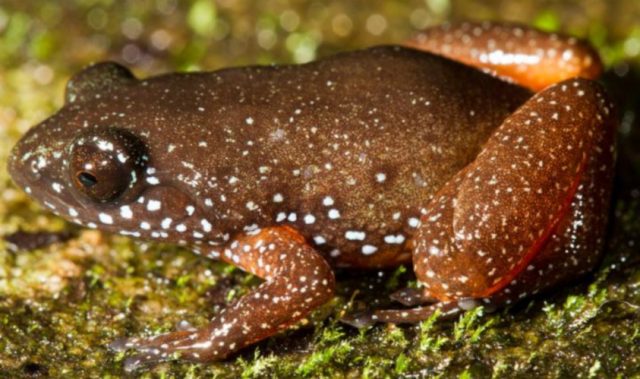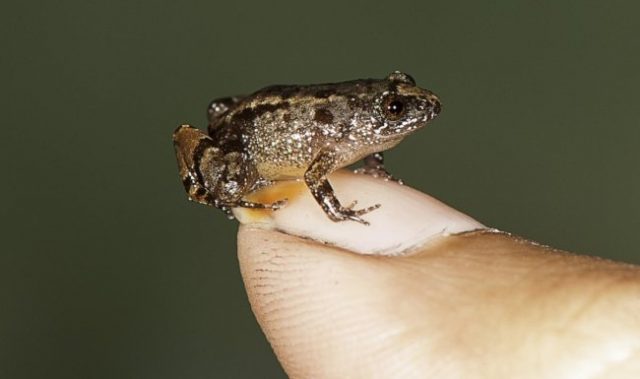
AsianScientist (Apr. 7, 2016) – A new tadpole that burrows through sand has been unearthed from the streambeds in the Western Ghats of India by Ms. Gayani Senevirathne from the University of Peradeniya and colleagues. Details of the discovery were published in PLOS ONE.
These tadpoles, from the Indian dancing frog family Micrixalidae, were discovered in the deep recesses of streambeds, where they live in total darkness until they fully develop into froglets. The identity of the tadpoles as Micrixalus herrei is genetically confirmed.
These tadpoles are endowed with muscular eel-like bodies and skin-covered eyes, which are useful when burrowing through gravel beds. They lack teeth, but have well-serrated jaw sheaths, which may help prevent large sand grains from entering the mouth while feeding and moving through sand. The tadpole gut contains small sand grains together with decaying organic matter, which acts as a nutrient source.
The Indian dancing frogs get their name from their unique behavior of sitting on boulders in streams while waving their legs as a territorial and sexual display. Though these displays are well known, this was, in fact, the only family of frogs and toads for which the tadpoles remained undiscovered.
“We provide the first confirmed report of the tadpoles of Indian dancing frog family,” corresponding author Professor SD Biju from the University of Delhi said.
“These tadpoles probably remained unnoticed all these years because of their fossorial [that is, adapted to digging and life underground] nature, which in itself is a rare occurrence in the amphibian world.”
They examined the external morphology of the tadpoles and scrutinized their bones using a double staining procedure, which revealed the presence of ribs in very early stages of tadpoles.
Professor Madhava Meegaskumbura from University of Peradeniya, who was involved with the study, said “only four families of frogs are reported to have ribs, but we show that at least some of Micrixalidae also have ribs, even as tadpoles; this adaptation may provide for greater muscle attachment, helping them wriggle through sand.”
Also, whitish globular sacs storing calcium carbonate, known as lime sacs, are present even in juvenile frogs of Micrixalus, which is uncommon in other frogs.
Very little is known about the preferred habitat of these tadpoles. Observations made so far show that the tadpoles inhabit sandy banks under canopy-covered streams.
The new finding reiterates the uniqueness of amphibians of the Western Ghats biodiversity hotspot, providing a platform for future studies on this amphibian family, while also delivering useful information for conservation of these ancient and endemic frogs.
The article can be found at: Senevirathne et al. (2016) Unearthing the Fossorial Tadpoles of the Indian Dancing Frog Family Micrixalidae.
———
Source: PLOS; Photo: SD Biju.
Disclaimer: This article does not necessarily reflect the views of AsianScientist or its staff.












